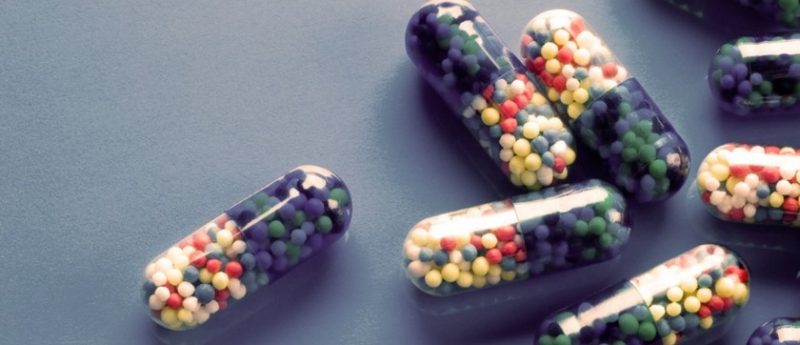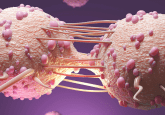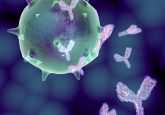Biosimilars at work: Access. Experience. Science.

Biosimilar medicines are a part of today’s therapeutic armamentarium – a “must-have weaponry” and a “catalyst for equal access” for physicians [1]. They have a track record of delivered healthcare benefits over the years.
Armed with over 10 years of positive clinical experience, physicians and patients are now focusing conversations on the long-term future of biosimilars, exploring how best to introduce biosimilar medicines in medical practice and ensure feedback in the post-authorisation phase.
So, what are the important questions remaining to be addressed?
Inform. Educate. Connect the dots.
In the EU, the regulatory and legal systems make nearly all scientific and regulatory information submitted to regulatory authorities by pharmaceutical companies available to the public e.g. European Public Assessment Reports (EPARs). Have you ever used a search engine for ‘biosimilar’? One thing for sure is that there is a plethora of available information on biosimilar medicines. The top search results are, however, not those one would expect nor perhaps recommend.
On the one hand, one can conclude that the availability and transparency of information may not be the main issues. Accessibility, suitability and legitimacy of the source on the other hand, are aspects which call for attention and improvement.
Engagement with patients and physicians has revealed that these communities are striving for greater awareness and understanding of biologic medicines, including biosimilars – the underlying scientific concepts are often complex in nature – and the way these medicines evolve in a controlled way throughout their lifecycle remains yet to be fully understood.
Among others, the European Commission (EC) and the European Medicines Agency (EMA) have taken leading roles in improving the suitability of available information over the years (i.e. tailored, structured content according to the level of expertise ranging from expert, specialized public and general public). The need to provide further clarification on what biosimilar medicines are was recognized very early on in the process, with the publication of an EMA Q&A on biosimilar medicines in 2007 which was followed by a revised version in 2012 [2]. After this, in 2013 the multi-stakeholder consensus document “What you need to know about biosimilars”[3] was followed by the recent EC Q&A documents tailored for patients [4] and physicians. In addition, a number of scientific publications by EU regulators [5] have been designed to address clinicians specifically.
Dissemination and enabling easy access to authoritative information should therefore remain a priority focus for all. The equation is rather intuitively resolved, awareness and understanding will grow according to how easy it is to find the information and to understand its content. Each of us has the responsibility to support progress in the patient-physician dialogue on the very important alternative therapeutic options presented by biosimilar medicines.
Stakeholders’ Engagement. Physician-led switching. Re-investing in health.
Biosimilar medicines have been utilized by physicians in clinical practice for over 10 years, across the EU and worldwide (EU approved biosimilar medicines are marketed in over 60 countries). EU-wide regular post-approval surveillance has established that biosimilar medicines have delivered on their comparability promise. Experience re-confirmed the robustness of the scientific principles and regulatory pathway in place in the EU and in other regions.
Clinical use remains heterogeneous, however, and huge variability is reported [6] throughout the EU Member States as well as across therapeutic areas.
What is the one common feature among adopters? A multi-stakeholder policy-making model where patients, physicians, governments, payers, regulators and industry actively engage and partner for better access and better health.
This dialogue platform allows for information sharing, education, clarification as well as adding weight in the case of immediate and longer term opportunities.
Physician led switching has been instrumental in the advent of biologic therapy and remains fundamental for unlocking the full potential of biosimilar medicines. It is supported by both regulators and medical societies across therapeutic areas [7]. A consortium of EU regulators recently concluded [8] that: ‘On the basis of current knowledge, it is unlikely and very difficult to substantiate that two products, comparable on a population level, would have different safety or efficacy in individual patients upon a switch.’
As more biosimilar medicines become available [9], concerns are now being voiced regarding switching between multiple versions of a medicine, biosimilars and reference product(s). Through multi-stakeholder dialogue, it appears that the question is not so much whether physicians should switch between these different medicines but rather how best to ensure monitoring and traceability i.e. linking a given medicine, time of administration and patient record.
The straightforward EU pharmacovigilance foresees a major role for doctors and their patients to actively feed into the system adverse event reporting associated with the trade name and batch number. In over 10 years of biosimilar medicines use, the system has been studied twice and confirms an excellent ability to identify medicines with the same International Non-Proprietary Name (INN) [10]. The focus will now be on improving batch number recording, enabling the experience data to feed back into regulatory science.
Where they have been used, biosimilar medicines have allowed more patients to be treated [6], sometimes also earlier in the patient care pathway (e.g. with treatment guidelines being changed [1]). This has not only resulted in better outcomes but has also enabled considerable re-investment, in times of high pressure on healthcare budgets. This has permitted the use of other medicines11, such as supportive therapies, or pricy innovative (personalized) medicines as well as enhanced health services through – for example – the hiring of additional nurses [12], running an observational study, developing national action plans [13] etc.
Efficient health gain re-investment or gainsharing, requires all actors to consider the best mechanisms to reconcile finite budgets, unmet needs and opportunities. It has proven to be a successful driver of clinical use of biosimilar medicines and policy makers, in collaboration with physicians and patients, should be encouraged to implement more of these programmes.
2017, An (R)Evolutionary year for access to standard of care in Oncology treatment?
There is a growing acknowledgment of the essential role biosimilar medicines have played to date and what remains to be harvested in terms of opportunities going forward.
Key bio-therapeutic treatments for cancer have become the standard of care over the years and monopolies are naturally coming to an end, opening the way for competition.
Out of the newest wave of biosimilar candidates and approvals, a majority will target the oncology field and belong to the top 10 medicines most significantly impacting healthcare budgets [14] for example – trastuzumab, rituximab, bevacizumab.
In parallel, patients’ access to cancer medicines varies widely across countries with patients in some countries (such as Spain) having access to fewer than 40% of new cancer drugs launched globally [15].
There is a major access opportunity in cancer therapies just around the corner. Cancer is the second leading cause of mortality and morbidity in Europe and it confers the second largest disease burden in Europe, accounting for 19% of all disease [16]. Cancer caused around 1.4 million deaths across the EU in 2016 [17], equivalent to one in four deaths. The associated healthcare costs are enormous, estimated at €87.9 billion in 2014 [18].
Biosimilar medicines can transform oncology care, by prioritizing greater and equal patient access to biologic medicines treatment, supportive care and needed health services. They can support the sustainability of national healthcare systems in the long run.
Rather than a revolution, a significant, logical and well-founded evolution is underway with biosimilar medicines offering great benefits for all involved in the healthcare system. Biosimilar policies taking due account of the role they play and systems where gains are shared among all, will allow for reinvestment in the most needed areas for the patients of today and tomorrow.
[1] Tabernero J. – Biosimilars create opportunity for sustainable cancer care; European Pharmaceutical Review, 22 Feb 2017
[2] EMA Biosimilar medicines – Q&A on biosimilar medicines – September 2012 – EMA/837805/2011 http://www.ema.europa.eu/docs/en_GB/document_library/Medicine_QA/2009/12/WC500020062.pdf
[3] EC DG GROW – Corporate Social Responsibility – Market Access for Biosimilars – 2013-2017
http://ec.europa.eu/growth/sectors/healthcare/competitiveness/corporate-responsibility/
[4] EC DG GROW – Q&A for patients – Biosimilar medicines explained – 2016 – http://ec.europa.eu/DocsRoom/documents/20961
[5] Biosimilar Medicines Group – Reading List on biosimilar medicines – Mar 2017 http://www.medicinesforeurope.com/wp-content/uploads/2016/03/Biosimilars-Reading-list-update-20160831.pdf
[6] EC DG GROW – Corporate Social Responsibility – Market Access for Biosimilars – IMS Report Impact of Biosimilar Competition 2016
http://ec.europa.eu/DocsRoom/documents/17325/attachments/1/translations/en/renditions/native
[7] Biosimilar Medicines Group – Positioning statements on physician-led switching (March 2017) www.medicinesforeurope.com/wp-content/uploads/2017/03/M-Biosimilars-Overview-of-positions-on-physician-led-switching.pdf
[8] Kurki P. et al, Interchangeability of biosimilars: A European perspective ; January 2017 – Biodrugs 2017 http://link.springer.com/article/10.1007/s40259-017-0210-0
[9] EMA website – List of Authorised biosimilar medicines
www.ema.europa.eu/ema/index.jsp?curl=pages/medicines/landing/epar_search.jsp&mid=WC0b01ac058001d124
[10] Vermeer N et al. Traceability of biopharmaceuticals in spontaneous reporting systems: a cross-sectional study in the FDA adverse reporting system (FAERS) and Eudravigilance databases – Drug Safety 2013;36(8):617-625 – http://link.springer.com/article/10.1007%2Fs40264-013-0073-3
[11] IMS Institute for Healthcare Informatics – Delivering on the potential of Biosimilar medicines – (2017).
[12] Razanskaite V and Cummings F. Biosimilar Remicade – the cost-savings benefits. Hospital Pharmacy Europe Issue 80 Winter (2015).
[13] DKMA Action Plan on biological and biosimilar medicines https://laegemiddelstyrelsen.dk/en/sideeffects/biological-and-biosimilar-medicinal-products/
[14] IMS Health, MIDAS (2016).
[15] IMS Institute for Healthcare Informatics, 07 October 2015 – www.imshealth.com/en/thought-leadership/quintilesims-institute/reports/ims-health-finds-global-cancer-drug-spending-crossed-$100-billion-threshold-in-2014-article
[16] Eurostat website. Cancer statistics. 2016 – http://ec.europa.eu/eurostat/statistics-explained/index.php/Cancer_statistics ; http://ec.europa.eu/eurostat/documents/2995521/6131615/3-25112014-BP-EN/aab2c2d3-aed9-430a-a561-e188b8ef49d8
[17] Malvezzi M, et al. European Cancer mortality predictions for the year 2016 with focus on leukemias. Ann Oncol 2016; 27:725-31
[18] Jönsson B, et al. Comparator report on patient access to cancer medicines in Europe revisited. IHE, Lun: 2016:4 www.ihe.se/access-to-cancer-medicines-in-europe.aspx
Profile:
 Julie Maréchal-Jamil is the Director Biosimilars Policy and Science at Medicines for Europe, the trade organization representing the generic, biosimilar and value added medicines. She leads the Biosimilar Medicines Group which gathers leading companies in the field with a view to foster enhanced access to biosimilar medicines for patients who need them. She also engages with a wide spectrum of healthcare stakeholders to raise understanding, trust and acceptance – key enablers for increased medical use of these life savings therapies. The sector group’s objective is to promote better health thanks to better access to modern therapies for patients, contributing to the long-term sustainability of the healthcare system in the EU Member States while promoting efficient science-based regulatory framework and win-win gains through health policies.
Julie Maréchal-Jamil is the Director Biosimilars Policy and Science at Medicines for Europe, the trade organization representing the generic, biosimilar and value added medicines. She leads the Biosimilar Medicines Group which gathers leading companies in the field with a view to foster enhanced access to biosimilar medicines for patients who need them. She also engages with a wide spectrum of healthcare stakeholders to raise understanding, trust and acceptance – key enablers for increased medical use of these life savings therapies. The sector group’s objective is to promote better health thanks to better access to modern therapies for patients, contributing to the long-term sustainability of the healthcare system in the EU Member States while promoting efficient science-based regulatory framework and win-win gains through health policies.
Financial disclosure/Acknowledgements:
Full-time employment at Medicines for Europe




